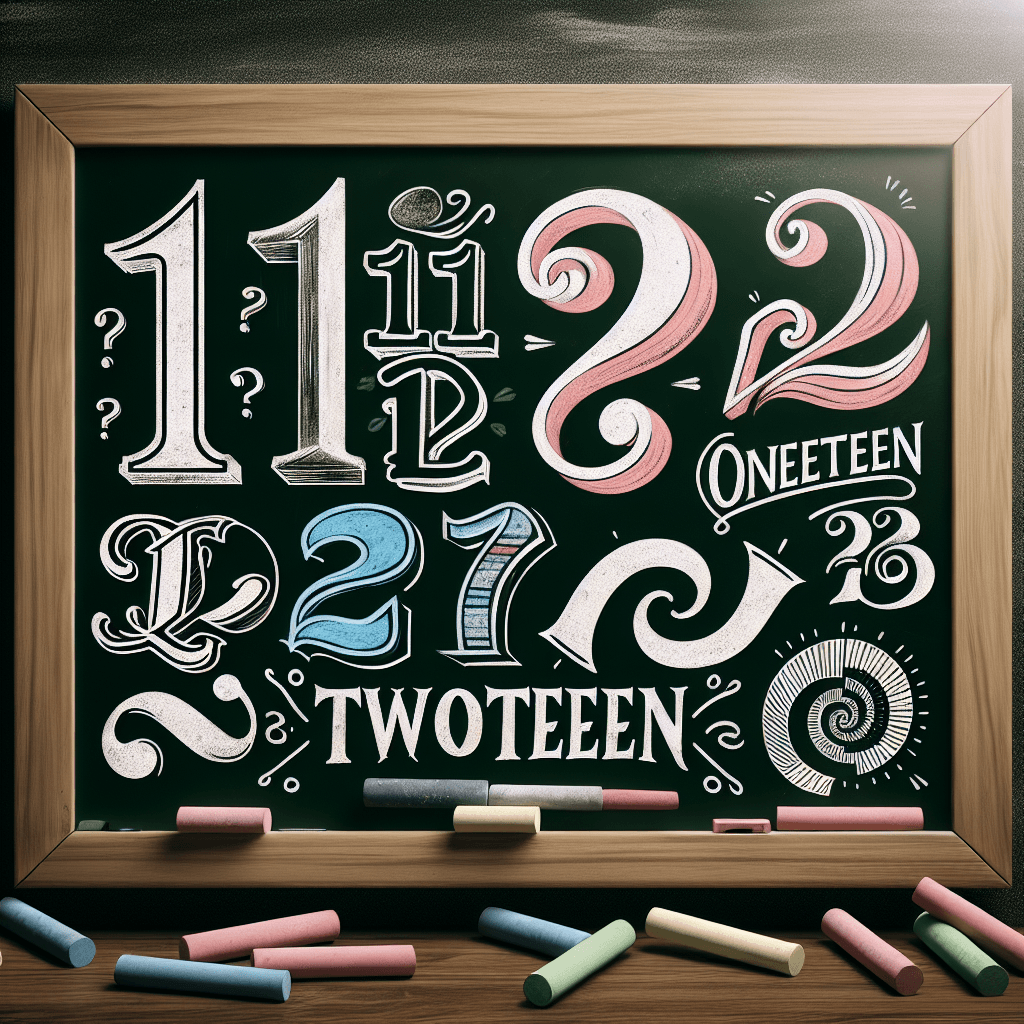The Linguistic Puzzle: Why Aren't Eleven and Twelve Called Oneteen and Twoteen
Ever wondered why the numbers eleven and twelve break the familiar '-teen' pattern? This linguistic quirk isn't a mistake, but a fascinating glimpse into the history of language and counting.


Too Long; Didn't Read
The words 'eleven' and 'twelve' come from Old Germanic roots meaning 'one left' and 'two left' (after ten), preserving an older counting system that existed before the '-teen' pattern became standard.
The Linguistic Puzzle: Why Aren't Eleven and Twelve Called Oneteen and Twoteen?
Ever found yourself teaching a child to count, or perhaps just idly musing over numbers, and paused at a peculiar inconsistency? We smoothly transition from one, two, three... all the way to ten. Then, suddenly, we hit "eleven" and "twelve" before picking up a more predictable pattern with "thirteen," "fourteen," and so on. Why don't we say "oneteen" and "twoteen"? This question delves into the fascinating evolution of language and the historical roots of our number system. This blog post will uncover the linguistic reasons behind why eleven and twelve stand apart, offering a glimpse into how our ancestors conceptualized numbers.
The Unique Origins of Eleven and Twelve
The primary reason eleven and twelve don't follow the "-teen" pattern seen in numbers thirteen through nineteen lies in their ancient Germanic roots, specifically from Old English. These two numbers had their own distinct names long before the "-teen" suffix became a standardized way to form the subsequent numbers.
"One Left" and "Two Left": The Old English Clue
The words "eleven" and "twelve" are not arbitrary; they carry descriptive meanings from Old English:
- Eleven: This word originates from the Old English term "endleofan." This can be broken down into "ān" (meaning "one") and "lifan" (meaning "to leave" or "left over"). So, "endleofan" essentially meant "one left" (after counting to ten).
- Twelve: Similarly, "twelve" comes from the Old English "twelf." This translates to "twā" (meaning "two") and "lifan" (again, "to leave" or "left over"). Thus, "twelf" signified "two left" (after counting to ten).
This "left over" system provides a unique insight into how these numbers were conceptualized, possibly reflecting a system where counting often occurred in groups of ten.
The "-Teen" Suffix: A Different Construction
The numbers from thirteen to nineteen follow a more transparent and systematic construction. The "-teen" suffix is a direct linguistic descendant of "ten."
- Thirteen: Derived from Old English "þrēotīene" (three and ten).
- Fourteen: Derived from Old English "fēowertīene" (four and ten).
- And so on.
This "unit + ten" structure is more straightforward than the "unit + left over" structure of eleven and twelve. It seems that by the time higher numbers needed consistent names, this more logical additive approach became the norm.
Why Did the Irregularity Persist?
Languages are living entities, shaped by usage over centuries. Several factors likely contributed to "eleven" and "twelve" retaining their unique forms:
- Frequency of Use: Lower numbers, including eleven and twelve, are used far more frequently in everyday language than higher, more obscure numbers. Words that are used often tend to resist simplification or regularization that might affect less common words. Their ancient forms became deeply entrenched before any widespread standardization efforts.
- Historical Precedence: These terms were established well before a more systematic approach to number naming for the teens took hold. Once a word is commonly adopted and understood, there's little impetus to change it, even if it doesn't fit a later pattern.
- Germanic Heritage: This irregularity isn't unique to English. Many other Germanic languages show similar patterns, highlighting a shared linguistic ancestry for these number names. For instance:
- German: elf (eleven), zwölf (twelve)
- Dutch: elf (eleven), twaalf (twelve)
- Swedish: elva (eleven), tolv (twelve) This shared characteristic indicates that the distinct forms for eleven and twelve developed early in the history of the Germanic languages, before English branched off as its own distinct language.
A Glimpse into Counting Systems
Some linguists and historians suggest that the special treatment of eleven and twelve might also hint at the influence or remnants of a duodecimal (base-12) system in some early Germanic cultures, alongside the more dominant decimal (base-10) system. While our modern system is overwhelmingly base-10, the unique names for eleven and twelve could be echoes of a time when counting up to twelve as a distinct set was common, perhaps due to the ease of counting finger joints (three on each of four fingers) with the thumb. However, the "left over after ten" etymology strongly supports a base-10 perspective for their origin.
Conclusion
The reason we don't say "oneteen" and "twoteen" is a fascinating testament to the organic and historical evolution of language. "Eleven" and "twelve" are linguistic fossils, preserved from Old English, meaning "one left" and "two left" after ten, respectively. Their unique forms were established long before the more systematic "-teen" (meaning "and ten") suffix was applied to numbers thirteen through nineteen. The high frequency of their use and their deep roots in the Germanic language family ensured their survival against later, more regular patterns. So, the next time you count past ten, you're not just reciting numbers; you're echoing a linguistic history that stretches back over a thousand years.
More Articles

Why is the world's lightest solid material actually made of ninety-nine percent air?
It looks like a piece of frozen smoke and feels almost weightless—discover the mind-bending science behind how this ghostly material gets its incredible strength from being almost entirely empty space.

Why does frost on a window form such beautiful, fern-like patterns?
It isn't magic painting your windowpane, but a beautiful quirk of physics. Discover how a single, invisible imperfection on the glass can bloom into an entire forest of icy ferns overnight.

Why do stacked plastic cups sometimes get so impossibly stuck together?
That stubborn stack of plastic cups isn't just stuck; it's being held hostage by a powerful vacuum and the simple laws of physics.